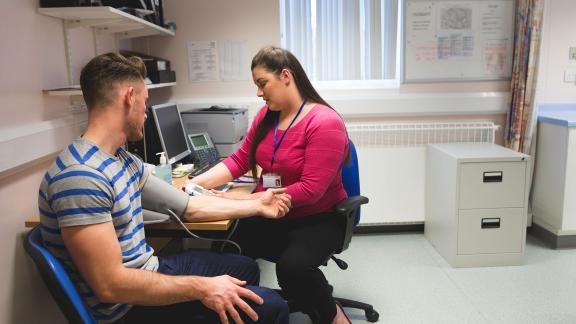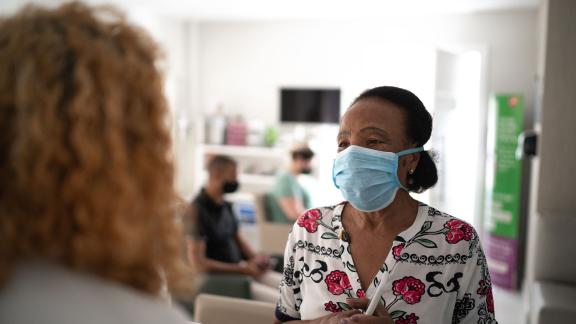The Winter Access Fund: system-working to support primary care

This guide provides an overview of the Winter Access Fund announced on 14 October. It provides examples of how providers and systems have been improving access to primary care and poses a number of questions to help facilitate discussions and planning between primary care providers and clinical commissioning groups/systems.
With primary care under immense pressure, the detail and the deployment of the fund has been challenged by many sector leaders. System partners have also expressed concerns and there is recognition from system leaders of healthcare providers’ dependency on primary care and an appreciation that access is a system-wide issue that requires a system-wide solution.
Overview of the Winter Access Fund
“As a place-based leader for health I have a role in working with and supporting primary care.” Matthew Kershaw, Chief Executive and Place Based Leader for Health, Croydon Health Services NHS Trust
NHS England and NHS Improvement (NHSEI) has made a £250 million Winter Access Fund available to systems from November 2021 to March 2022 to build resilience and improve patient access. The funding is available on a weighted capitation basis and will be deployed based on a system’s ability to demonstrate value, including quantifying the scale of increased capacity and expected impact. This is specifically in respect of improved access to urgent, same-day primary care and by the resilience of the NHS urgent care system during winter.
The system plans due must have involvement from primary care network (PCN) clinical directors.
"Our challenge is to build on the successes that were possible through the pandemic response and to make collaboration and working collectively the default operating model." Simon Trickett, Chief Executive and Accountable Officer, Herefordshire and Worcestershire CCG
Process and timescales
- NHSEI will publish a standard template.
- Systems must submit their plans by 28 October.
- GP practices must review the balance of their consultations delivered remotely and face to face, and the quality of their data by the end of October.
- Funding will be released to lead CCGs in early November.
- RCGP will update its guidance on optimal blend of remote and face-to-face triage and care by the end of November.
- Practices can sign up to the Community Pharmacist Consultation Service by 1 December.
- Funding could be discontinued or reduced if demonstrable progress has not been made by mid-December.
- Systems are required to achieve the additional workforce targets by March 2022.
- A new real-time measure of patient satisfaction will be rolled out from April 2022.
- Transfer of extended access service to PCNs postponed to October 2022.
“Systems are built from the ground up and being a primary care system leader means ensuring system priorities reflect local population needs.” Dr Pramit Patel, GP Clinical Director for Care Collaborative PCN, Primary Care Network Leader, Surrey Heartlands ICS and Chair, PCN Network, NHS Confederation
Roles of system partners
“We are one team so if one part of the sector fails, we all fail.” Jacqueline Totterdell, St George’s University Hospitals NHS Foundation Trust
- Local systems determine the optimal use of funding in line with local issues and solutions, national expectations and requirements.
- The ICS board must provide assurance of the system plan
- PCN clinical directors must be involved in developing the plan.
- Secondary care must assess and address certain processes that generate avoidable administrative burdens for GPs.
“Mental health services need to ensure we are co-producing solutions that see clinicians and non-clinicians, specialists and non-specialists as experts in local need and co-owners of solutions.” Peter Molyneux, Chair, Sussex Partnership NHS Foundation Trust
Suggested approach for primary care
1. Work towards an objective
- The system-wide objective is: ‘To help patients with urgent care needs to get seen when they need to, on the same day, taking account of their preferences, instead of going to hospital.’
- The primary care objective is: ‘To drive improved access to urgent, same day primary care (ideally at the patient’s own general practice) by increasing capacity and GP appointment numbers at practice or PCN level or in combination’.
In practice, this means:
- Increasing the number of same-day, face-to-face, GP appointments available across your PCN footprint.
- Increase same-day capacity. It does not specify which primary care professional(s)’ capacity needs to be increased and it is unclear whether this must take place at practice, PCN or system level.
“As part of our response, we are rapidly developing proposals to share with our emerging GP Boards for how best extra capacity could be delivered on a PCN or place footprint. As the PCN service specifications comes into force in our practices, we are working with PCN clinical directors to apply the lessons learnt from the vaccination programme to rapidly develop plans and coordinate delivery across practices and PCNs to support both winter resilience and sustain primary care recovery.” Michael Smith, Chief Officer, Bolton GP Federation
2. Work as a system leader
- The guidance states that PCN clinical directors must be involved in developing each system’s draft plan.
- PCN clinical directors should take the leading role in developing a strategy and implementation plan for their PCN:
- Develop a strategy for your PCN
- Confirm the strategy with PCN member practices
- Confirm the strategy with your CCG
- Work with your CCG to translate this strategy into a plan using the standard template.
“My role as PCN clinical director is to be a system leader, integrating care around my patients and providing vital clinical leadership.” Kat Dalby-Welsh, Nurse Clinical Director, Yeovil PCN and Vice Chair, PCN Network

Consider
Which other parts of the system could you involve? For example: the voluntary and community sector, federations, other PCNs, mental health trusts.
3. Develop a strategy for your PCN
Work with local commissioners to determine the expected scale of increase in overall same day capacity and face-to-face GP appointments for your PCN. Analyse the data across your PCN to understand how patients currently access and receive services.

Questions to consider
- How can workload at practice and PCN levels be split into clinical and non-clinical?
- What non-clinical work can be delivered at PCN level for all member practices? Could it be delivered at a network of network / federation level?
- What lessons have been learnt from the vaccination programme that could be applied?
- How could the hot and cold sites model be adopted?
- How can you work with other PCNs or federations?
- How could extended access services be scaled-up?
- How could locum GPs be used?
- What are the commissioning opportunities in the voluntary and community sector?
Try to ensure all actions you take result in a projected increase in the number of same-day GP appointments available across your PCN footprint.
Ensure all actions you take result in a projected increase in same day capacity across the system.
4. Work with your CCG to translate this strategy into a plan using the standard template, which should include how the plan will be monitored and reported on
Practices with the lowest level of face-to-face appointments:
- CCGs should already have begun identifying these practices.
- Clinical directors should ask their CCG to share this list of practices with them.
- Clinical directors may wish to offer these practices support as part of their PCN grouping.
PCN and federation leaders have been sharing ideas and plans in the NHS Confederation's Primary Care Hub app. If you would like access to the hub, please get in touch.



